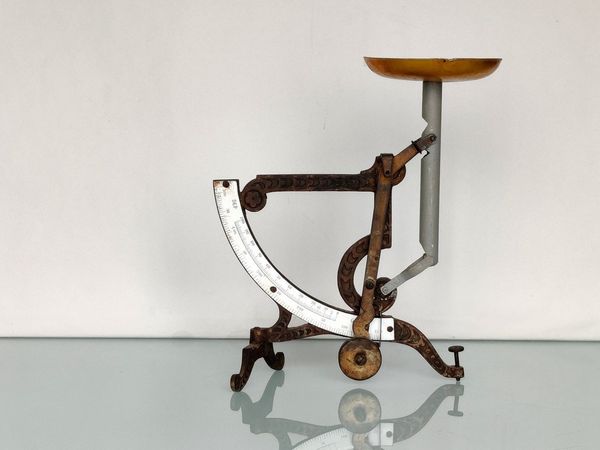History
The vintage postal scale traces its origins to the 19th century, a time when the postal system underwent significant transformations. The introduction of the Uniform Penny Post in the United Kingdom in 1840 revolutionized mail delivery, making it affordable for the masses. This era necessitated accurate weight measurement of letters and parcels to determine postage costs, leading to the development of postal scales. Early designs were often simple balance scales, but advancements in technology soon saw the introduction of more precise spring and dial scales. Notable manufacturers like Salter, Fairbanks, and Triner emerged, producing durable and reliable scales that became standard fixtures in post offices worldwide.
Usage
Vintage postal scales were indispensable tools in the postal service. Their primary function was to weigh letters and packages to calculate the correct postage. Depending on the scale’s design, users would place the item on a weighing platform, and the scale would indicate its weight, either through a balanced beam, a dial, or a digital readout in later models. Postal workers would then refer to a postage rate chart to determine the cost of sending the item based on its weight and destination.
These scales varied in complexity and capacity. Small, portable scales were used for letters and lightweight parcels, while larger, sturdier models could handle heavier packages. Accuracy was paramount, as incorrect postage could lead to mail being delayed, returned, or even lost. In addition to their primary function, some postal scales were equipped with additional features, such as built-in rate charts, mechanical counters, and even coin-operated mechanisms for public use.
Legacy
The legacy of vintage postal scales is multifaceted, reflecting their role in the evolution of postal services and their enduring appeal as collectibles and decorative items. Historically, these scales symbolize the meticulous and manual processes that defined early postal systems. They remind us of an era when communication was more deliberate and measured, quite literally, by the weight of each letter.
For collectors, vintage postal scales are prized for their craftsmanship and historical significance. They often feature intricate designs and robust materials, such as cast iron, brass, and wood, making them attractive additions to collections of antique office equipment or vintage industrial artifacts. Their aesthetic appeal also lends them to being used as decorative pieces in homes, offices, and museums, where they serve as conversation starters and nostalgic reminders of a bygone era.
Moreover, the evolution of postal scales from purely mechanical devices to digital instruments reflects broader technological advancements in measurement and automation. While modern postal services rely on digital scales and automated sorting systems, the principles established by their vintage predecessors remain foundational.
In summary, the vintage postal scale holds a significant place in history as a crucial tool in the development of postal services. Its usage was essential for ensuring accurate postage, and its legacy continues through its status as a collectible and a symbol of the evolution of communication technology. Whether admired for their functional role or their aesthetic charm, vintage postal scales are enduring artifacts of a pivotal era in the history of mail delivery.

Leave a Reply